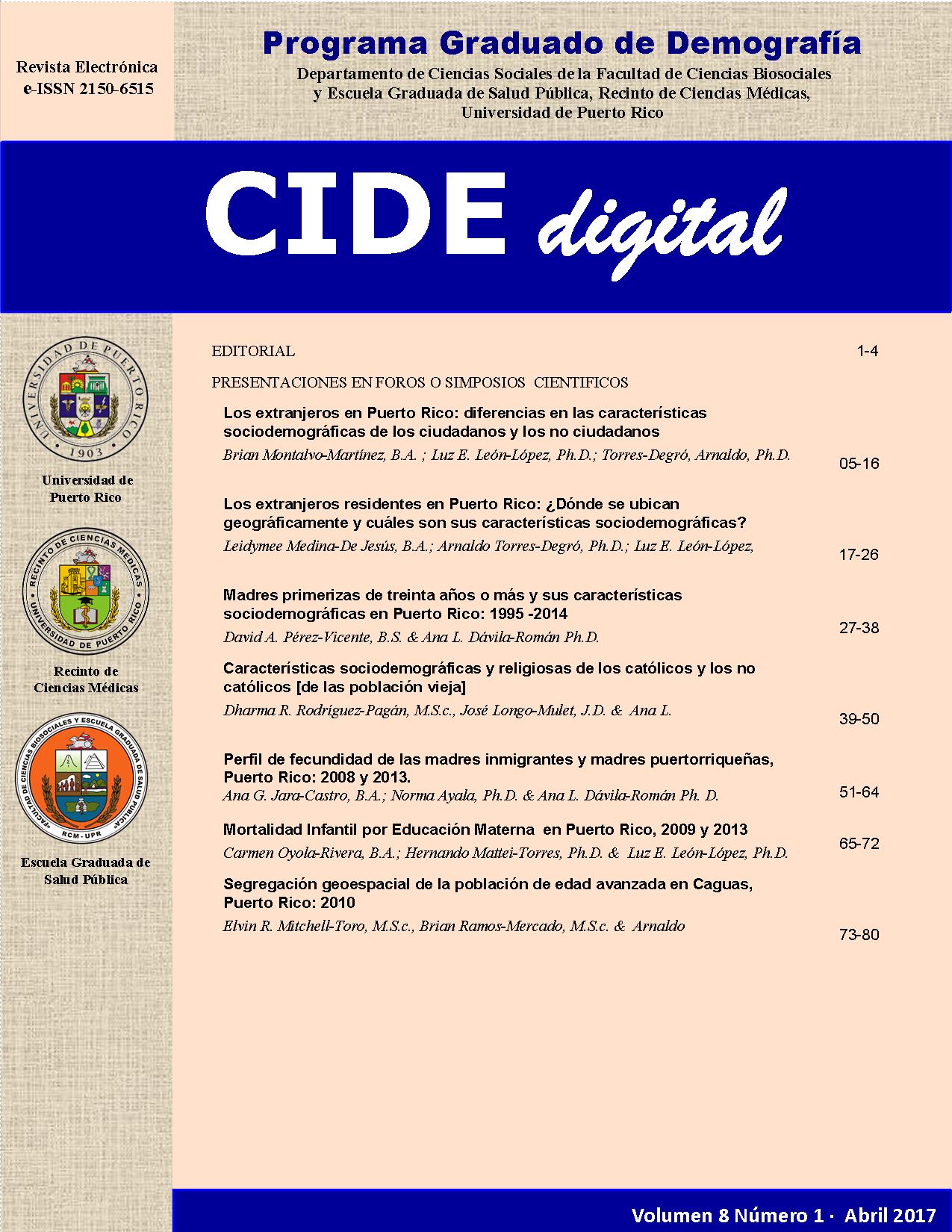Abstract
Background/Objective. Since the geographic perspective, the segregation can be appreciated as the differences of the population in relation to the space as it is organized. This study wants to analyze the segregation of the elderly population in Caguas using the census data for Puerto Rico in 2010. Methods. To determine if the segregation exists we employ the use of segregation indexes and the segregation curve established by Duncan and Duncan (1955). Results. After we evaluate all the census tracts, the obtained dissimilitude index founded was about .17, that implies that around 17% of the elderly population was not equal distributed in Caguas. The isolation index reveals a low probability (xPx = 0.17) of interaction between the elderly group with his same age group cohort. Otherwise, the interaction index (xPy =.83) indicates the non-existence of segregation. Finally, the concentration index supposed to that to achieve a uniform density of the elderly population in Caguas around a 17% of this cohort needs to move on. Conclusion. The results reveals the segregation of the elderly population as a cohort lightly isolated in relation to the 0-64 population with high probabilities of interaction with his same cohort and the rest of the population. In other hand, the segregation curve do not shows between both age groups. This exposes the needing of planification in the transport and health services for the elderly population taking into consideration his proportion related to the total of the population in Caguas.Downloads
Download data is not yet available.

